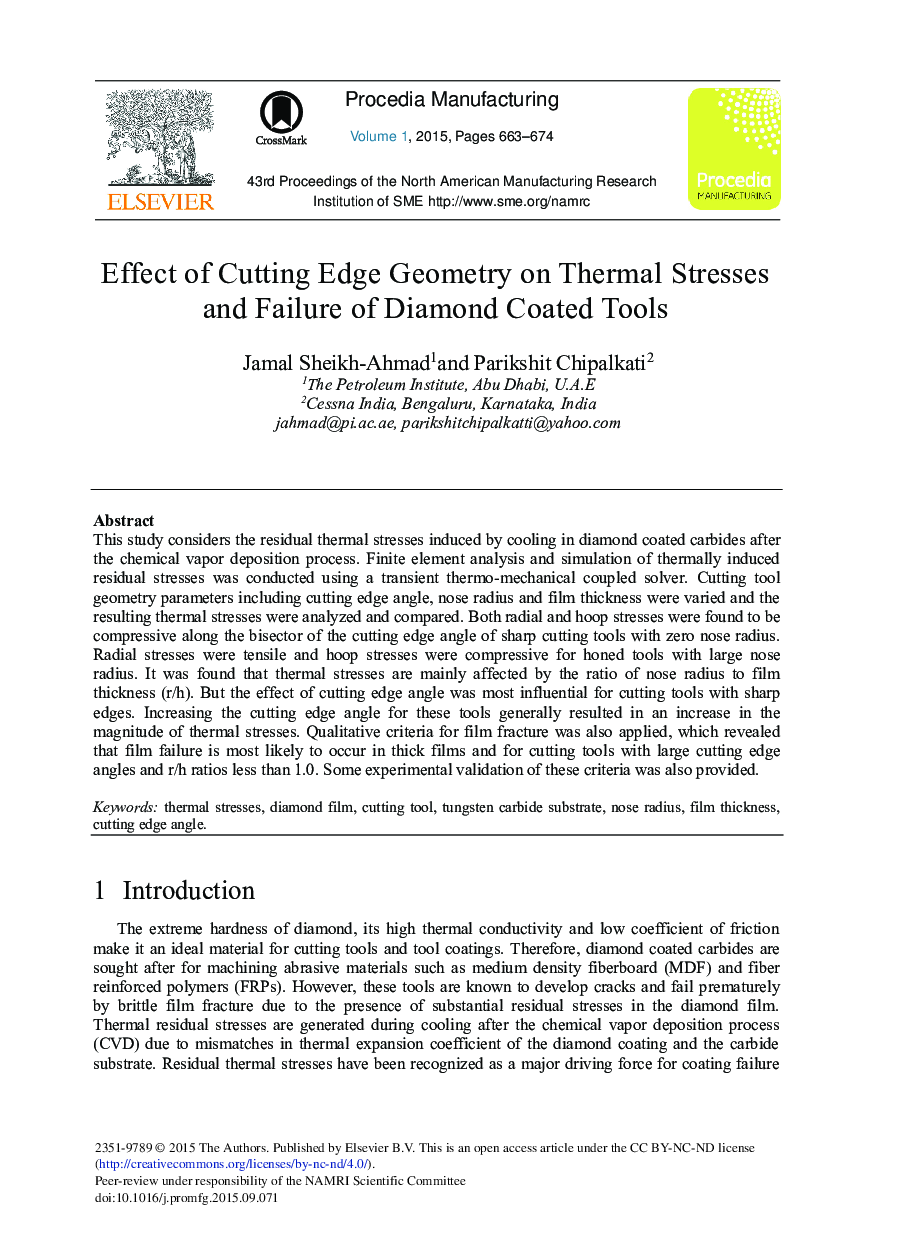| Article ID | Journal | Published Year | Pages | File Type |
|---|---|---|---|---|
| 1143734 | Procedia Manufacturing | 2015 | 12 Pages |
This study considers the residual thermal stresses induced by cooling in diamond coated carbides after the chemical vapor deposition process. Finite element analysis and simulation of thermally induced residual stresses was conducted using a transient thermo-mechanical coupled solver. Cutting tool geometry parameters including cutting edge angle, nose radius and film thickness were varied and the resulting thermal stresses were analyzed and compared. Both radial and hoop stresses were found to be compressive along the bisector of the cutting edge angle of sharp cutting tools with zero nose radius. Radial stresses were tensile and hoop stresses were compressive for honed tools with large nose radius. It was found that thermal stresses are mainly affected by the ratio of nose radius to film thickness (r/h). But the effect of cutting edge angle was most influential for cutting tools with sharp edges. Increasing the cutting edge angle for these tools generally resulted in an increase in the magnitude of thermal stresses. Qualitative criteria for film fracture was also applied, which revealed that film failure is most likely to occur in thick films and for cutting tools with large cutting edge angles and r/h ratios less than 1.0. Some experimental validation of these criteria was also provided.
